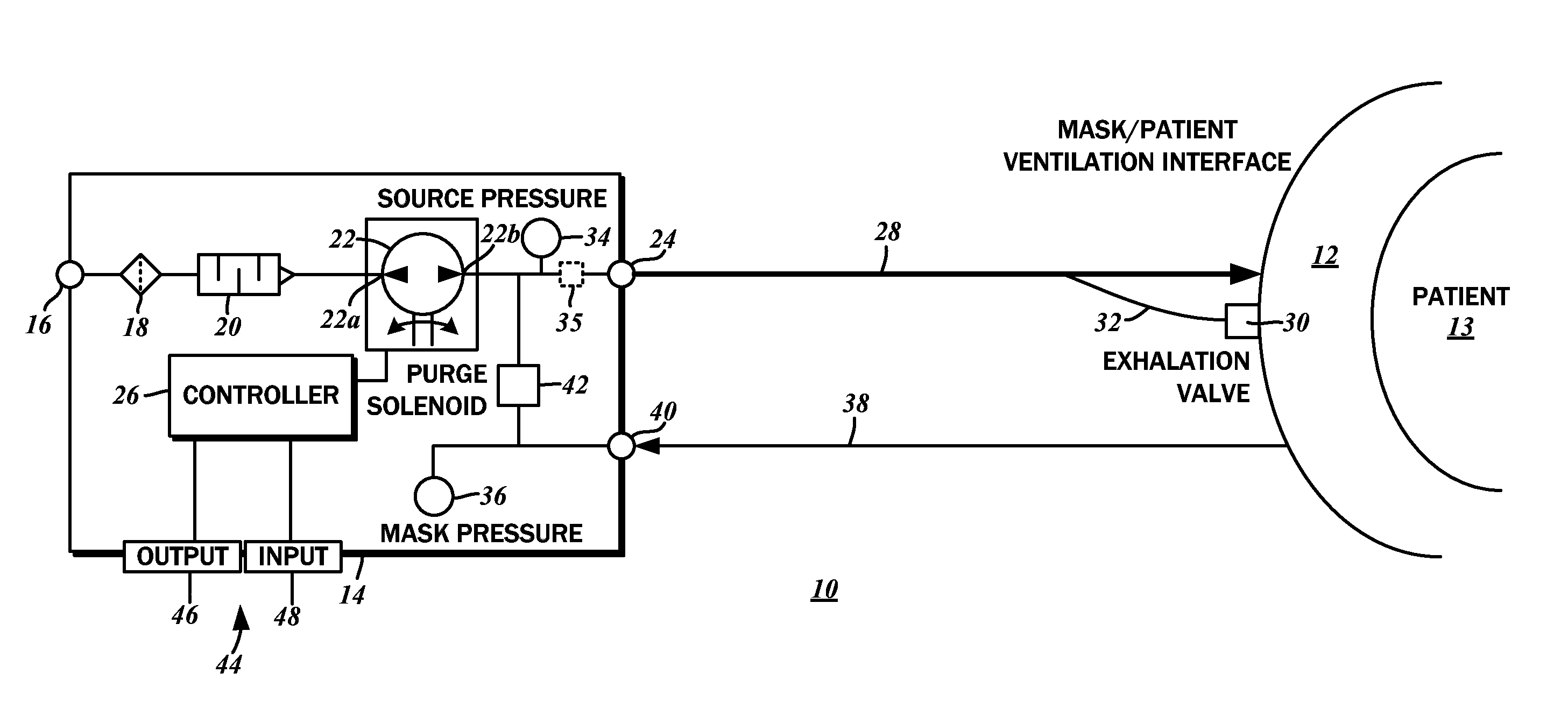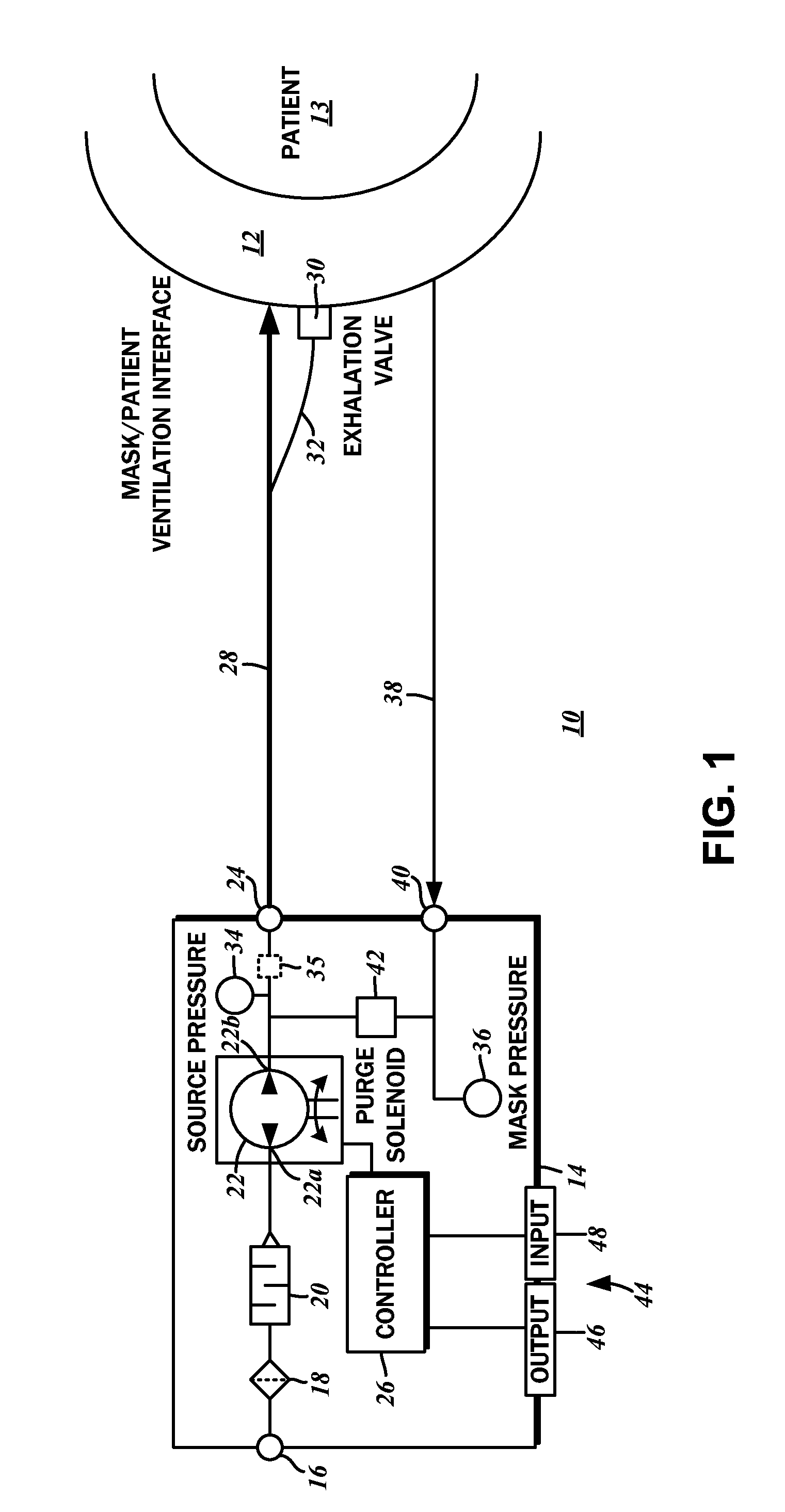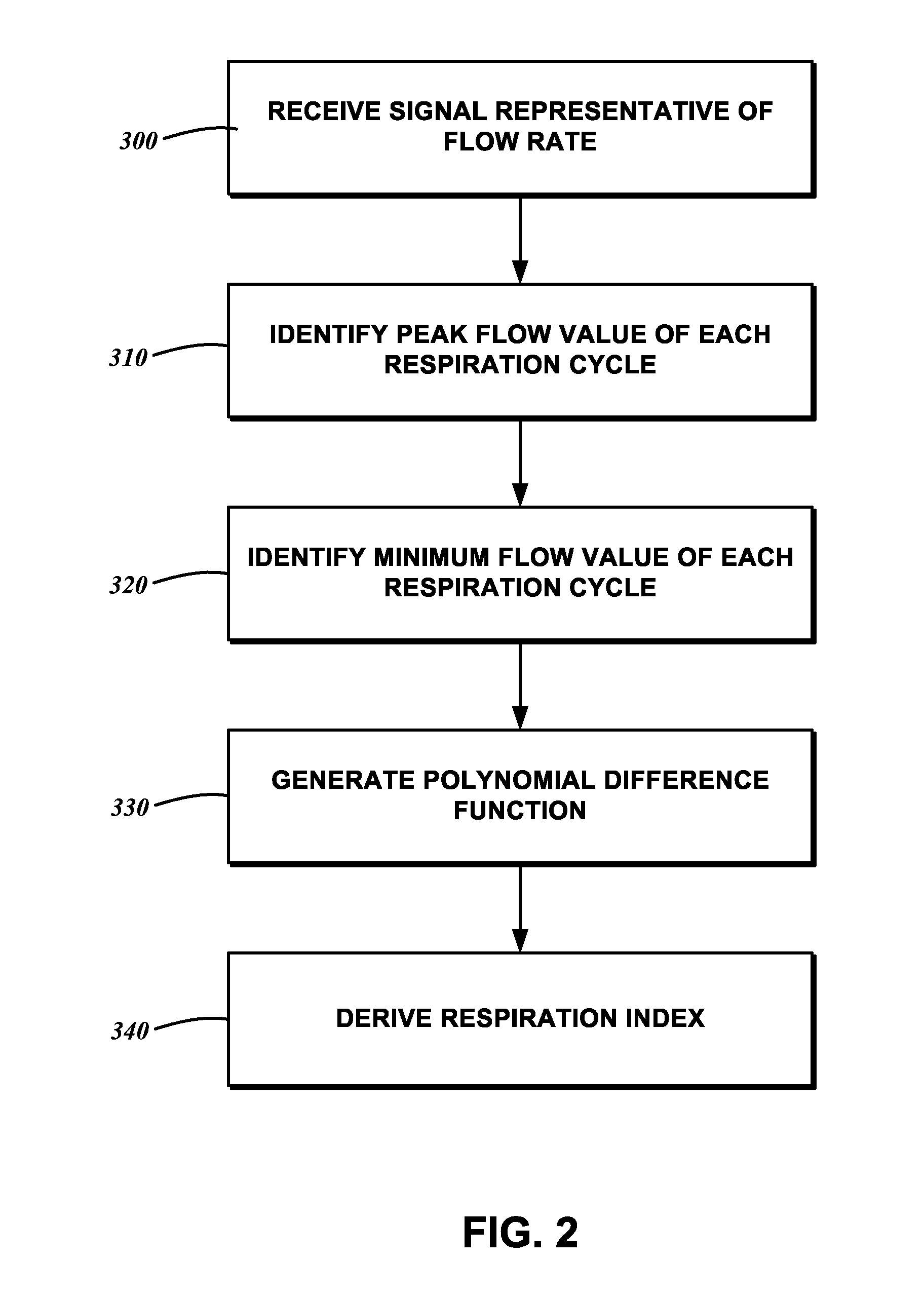Apnea and hypopnea detection
a technology applied in the field of apnea and hypopnea identification, can solve the problems of reduced blood oxygen saturation, high mortality rate, and more serious health concerns
- Summary
- Abstract
- Description
- Claims
- Application Information
AI Technical Summary
Benefits of technology
Problems solved by technology
Method used
Image
Examples
Embodiment Construction
[0020]The detailed description set forth below in connection with the appended drawings is intended as a description of the presently preferred embodiment of apnea and hypopnea detection, and is not intended to represent the only form in which the presented embodiments may be developed or utilized. It is further understood that the use of relational terms such as first and second and the like are used solely to distinguish one from another entity without necessarily requiring or implying any actual such relationship or order between such entities.
[0021]The block diagram of FIG. 1 illustrates an exemplary respiratory assistance device 10 in which various embodiments of the present disclosure may be implemented. There is a mask or patient ventilation interface 12, and a ventilation unit 14. The patient ventilation interface 12 is understood to be an apparatus such as a full-face mask or a nasal pillows mask that can be placed in direct gas flow communication with the upper respiratory...
PUM
 Login to View More
Login to View More Abstract
Description
Claims
Application Information
 Login to View More
Login to View More - R&D
- Intellectual Property
- Life Sciences
- Materials
- Tech Scout
- Unparalleled Data Quality
- Higher Quality Content
- 60% Fewer Hallucinations
Browse by: Latest US Patents, China's latest patents, Technical Efficacy Thesaurus, Application Domain, Technology Topic, Popular Technical Reports.
© 2025 PatSnap. All rights reserved.Legal|Privacy policy|Modern Slavery Act Transparency Statement|Sitemap|About US| Contact US: help@patsnap.com



